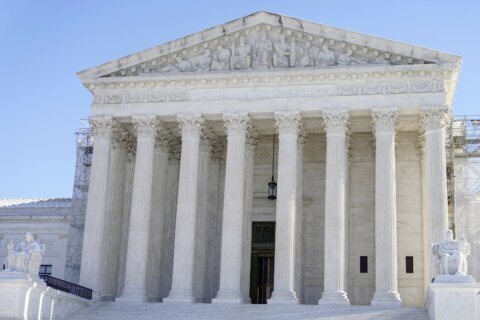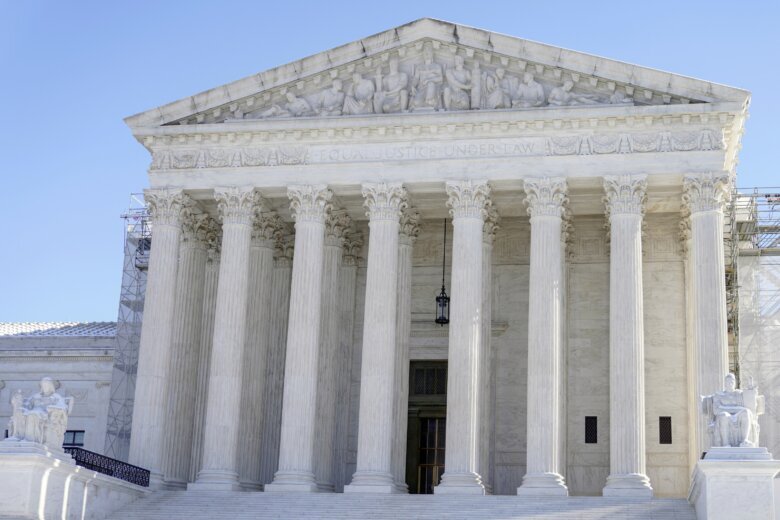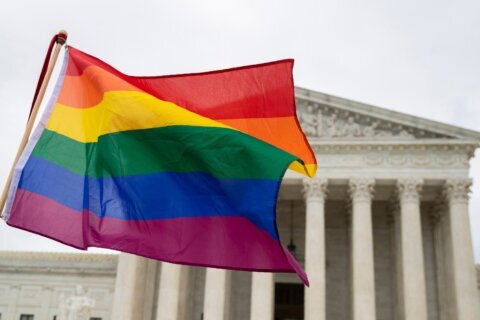
(CNN) — Since the Supreme Court first convened in 1790, 116 justices have served on the bench. Of those, 108 have been White men.
But in recent decades the court has become more diverse. Over half of its appointed justices since 1990 have been women or minorities.
The two most recently appointed justices were women, and one a woman of color. Ketanji Brown Jackson, previously a federal appeals court judge, in 2022 became the first Black woman on the high court. She succeeded Stephen Breyer, who is White.
And Amy Coney Barrett, also previously a federal appeals court judge, was chosen by Donald Trump to succeed Ruth Bader Ginsburg, who died in 2020.
Here’s how the demographics of the nation’s highest court have stacked up since its beginning.
Four have been people of color
Only three African American justices, Thurgood Marshall, Clarence Thomas and Ketanji Brown Jackson have served on the court.
The first appointment – when Lyndon B. Johnson nominated Marshall – was in 1967. When Johnson announced the nomination, he said he thought it was the right thing to do and the right time to do it.
Thomas’s appointment happened decades later, in 1991 under George H.W. Bush.
Jackson became the court’s third Black justice in 2022 after being nominated by Joe Biden.
Sonia Sotomayor is the first and only Hispanic justice in history. (Some say Justice Benjamin Cardozo, who was Portuguese, was the first Hispanic member, but he doesn’t qualify under current Census standards.) She was nominated by Barack Obama in 2009.
No justices so far have identified as Asian, Native American or Pacific Islander.
And no women or people of color have served as chief justices of the nation’s highest court.
Six have been women
Of the 116 justices in history, 110 – or 94.8% – have been men. Until 1981, every Supreme Court justice was male. But Ronald Reagan promised he’d put a woman on the court, and during his first year in office he kept that promise by appointing Sandra Day O’Connor.
Before that, presidents had appointed women to lower courts. While Harry Truman, who was president from 1945-1953, thought about nominating a woman to the high court, sitting justices at the time said women “would inhibit their conference deliberations.”
Bill Clinton made the second appointment of a woman to the high court by nominating Ruth Bader Ginsburg in 1993.
And Barack Obama appointed two women, the aforementioned Sotomayor and Elena Kagan, whom he appointed in 2010.
Sotomayor, Kagan, Barrett and Jackson all sit on the current court.
Eight have been Jewish
At its founding, the court was made up almost entirely of Protestant members, and a majority of the 116 justices throughout history have been Protestants.
The court today is more diverse. There are currently six Catholic justices, not including Neil Gorsuch — nominated by Trump in 2017 — who was raised Catholic but has more recently worshiped at an Episcopal church.
The US has never had a Jewish president, but eight Jewish justices have sat on the bench, including Kagan who currently sits on the bench.
There has never been a Muslim or Hindu justice on the Supreme Court.
Ivy League graduates dominate in recent decades
While the educational law background of many Supreme Court justices’ has varied in past centuries, modern history has been less so. Of the 60 justices confirmed between 1902 and 2022, 15 graduated from Harvard, seven from Yale and four from Columbia law schools.
On today’s court, all but one — Barrett, who attended Notre Dame Law School — hail from Yale or Harvard. The four Yale graduates are Brett Kavanaugh, Sotomayor, Thomas and Samuel Alito, and the four Harvard graduates are Gorsuch, Kagan, Jackson and Chief Justice John Roberts.
Since Oliver Wendell Holmes’ appointment in 1902, the Supreme Court has maintained at least one Harvard law graduate, and it has usually had multiple graduates.
Yale Law School did not have a graduate on the court until Potter Stewart’s confirmation in 1958.
Why diversity matters
The Supreme Court has ruled on a diverse set of topics and sees a wide array of cases.
It’s laid out decisions that affect many segments of the nation’s population, like whether schools should be segregated, whether women can get abortions and if public accommodations can refuse services based on religious beliefs.
The court has heard cases that none of its members can directly relate to. Obergefell v. Hodges, which legalized same-sex marriage, was decided by nine justices, none of whom have identified as gay. No past or present justices have publicly identified themselves as anything other than straight.
In 2016, Sotomayor said the court could use more diversity.
“A different perspective can permit you to more fully understand the arguments that are before you and help you articulate your position in a way that everyone will understand,” she said.
This is an updated version of a story that was first published in 2018 and updated in 2022.
The-CNN-Wire
™ & © 2024 Cable News Network, Inc., a Warner Bros. Discovery Company. All rights reserved.







